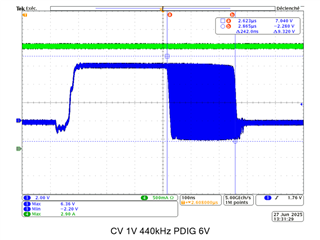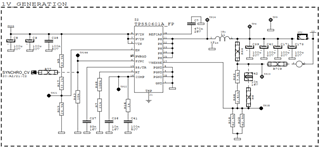Tool/software:
Hello,
I am using the component to create a 1V from a 6V power supply, and I am facing an issue regarding the pulse ON of the converter which have jitter (around 160ns).

The regulation loop is stable. More than 60° phase margin and 15dB gain margin and the switching frequency is around 440kHz.
The only way to reduce the jitter of the ON pulse is to reduce the input voltage less than 4.5V but it is not acceptable for the project.
Do you have a clue to reduce the jitter ? And why is there so many ?
L = 10uH and Cout = 4*100uF
Best regards
Guillaume Bazin
Electronic Engineer


